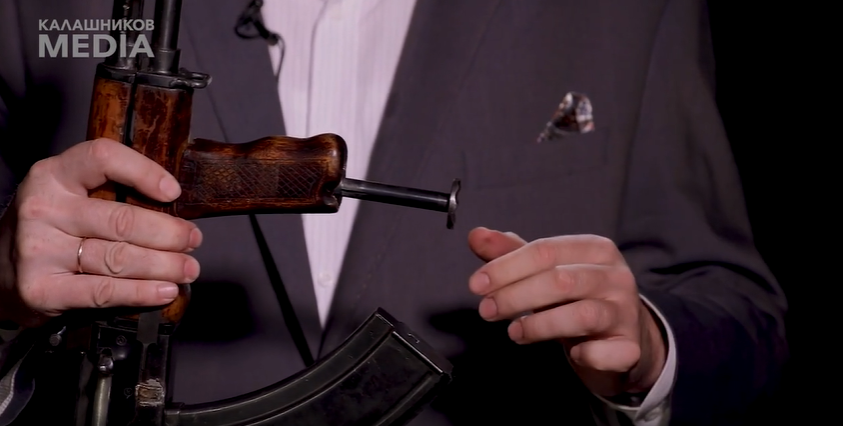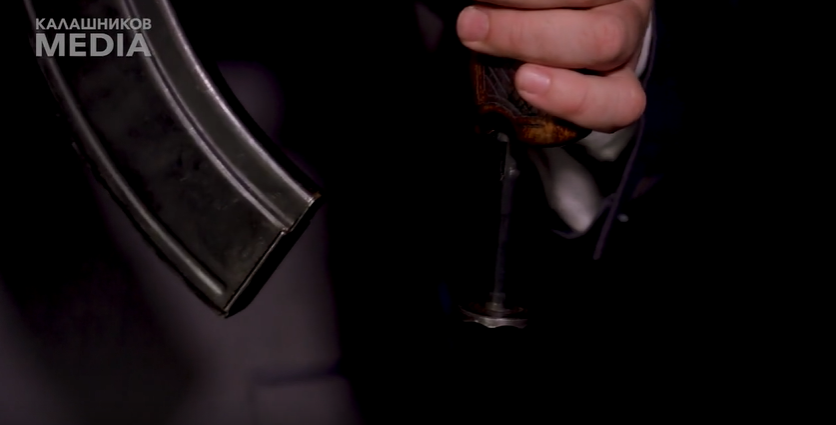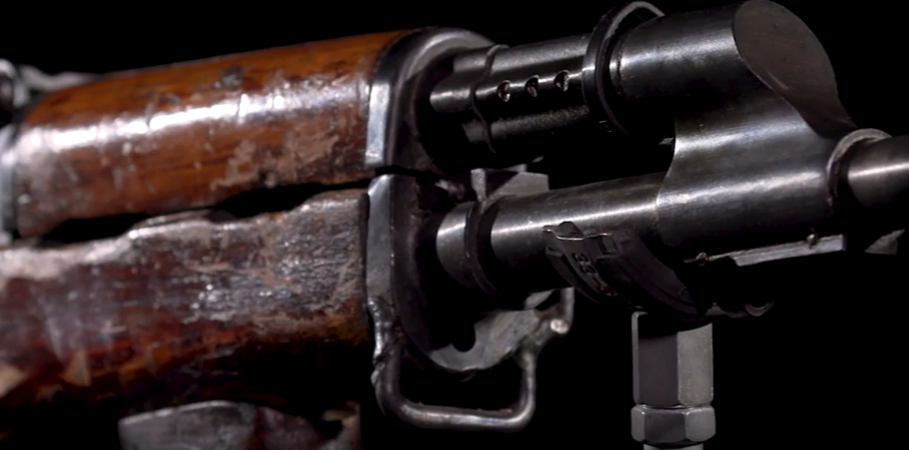Kalashnikov Media has published a video showing a very interesting AK-47. This is an experimental Type 1 AK that has some design changes done by Mikhail Kalashnikov himself. The experiments were done in the early ’50s, shortly after the adoption of AK-47 in 1949, in an attempt to find ways of improving the weapon’s performance, especially when firing in full auto mode and from unstable stances.

The first design change that immediately jumps out is the vertical forward grip. This forward grip also doubles as a housing for a front monopod hidden inside it. The monopod is deployed by pulling it out and rotating to fix it in place. It looks like the monopod is in line with the magazine heel and was probably supposed to be used along with the magazine as an additional contact point when shooting prone.


Another design change that you may have noticed is the welded loop at the bottom portion of the handguard retainer. I don’t know why exactly it was added but my best guess is that maybe it was an experiment of making an ambidextrous front sling loop which could also possibly work as a hand/barricade stop?

Next up, there is a design change that is not visible externally. When the safety selector is on full auto mode, the gun fires from an open bolt. According to the Kalashnikov Media, prooving ground tests in 1947 and 1948 showed that when firing from an open bolt you get better accuracy of full-auto fire. More commonly known benefits of the open bolt are the faster cooling of the weapon due to the open chamber and elimination of cook-offs.
In semi-auto mode, the rifle works as usual firing from a closed bolt. The conversion of the fire control group is achieved with minimal changes. For example, the open bolt sear is the hammer itself – a typical Mikhail Kalashnikov style simple solution.

The BCG is held back when the full auto mode is selected
Note also that the safety selector lever has a cutout which we often see in modern aftermarket selectors. The modern ones are designed to be a way to hold the BCG back by catching the charging handle. However, I think the cutout on this experimental AK’s safety selector is simply to allow clearing the charging handle when you need to put the gun on safe with the BCG held back in full auto mode.

It is unknown to this author what is the sheet metal part for that is screwed on the handguard and points backwards.
These design changes proved not to provide significant enough performance improvements to be considered by the Soviet military as additions to the production AKs. Besides Mikhail Kalashnikov, many other designers have also been working on improving the AK-47. Earlier we published an article about such experiments done by proving ground officers Vasiliy Lyutiy and Boris Kannel.

Images are screenshots from Kalashnikov Media video which you can watch by clicking HERE.
 Your Privacy Choices
Your Privacy Choices
